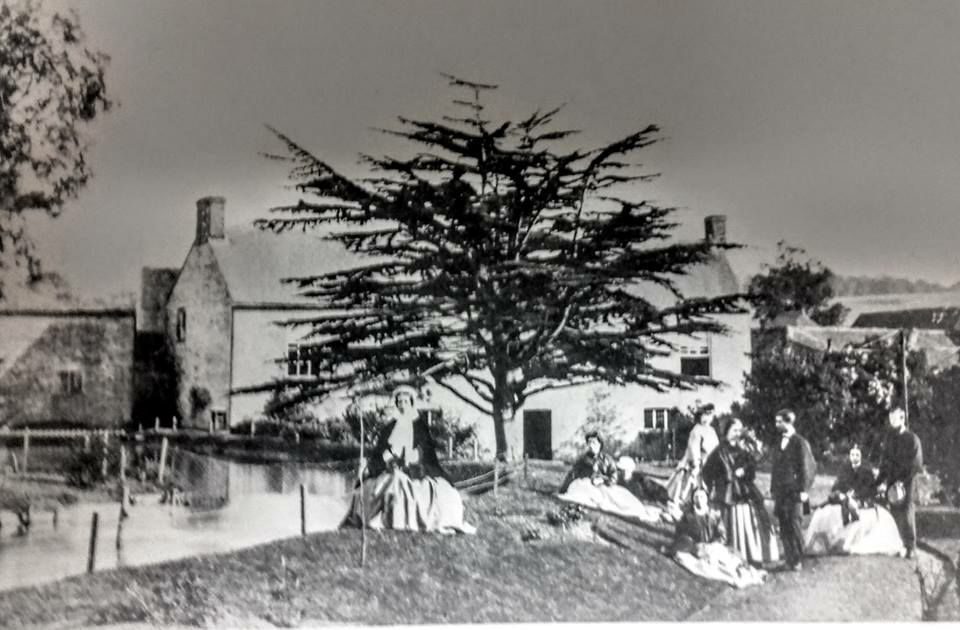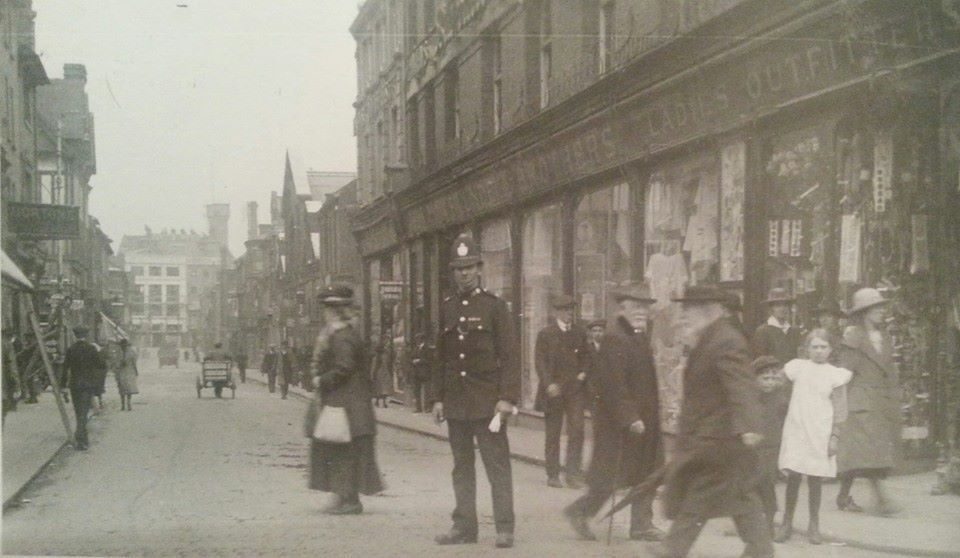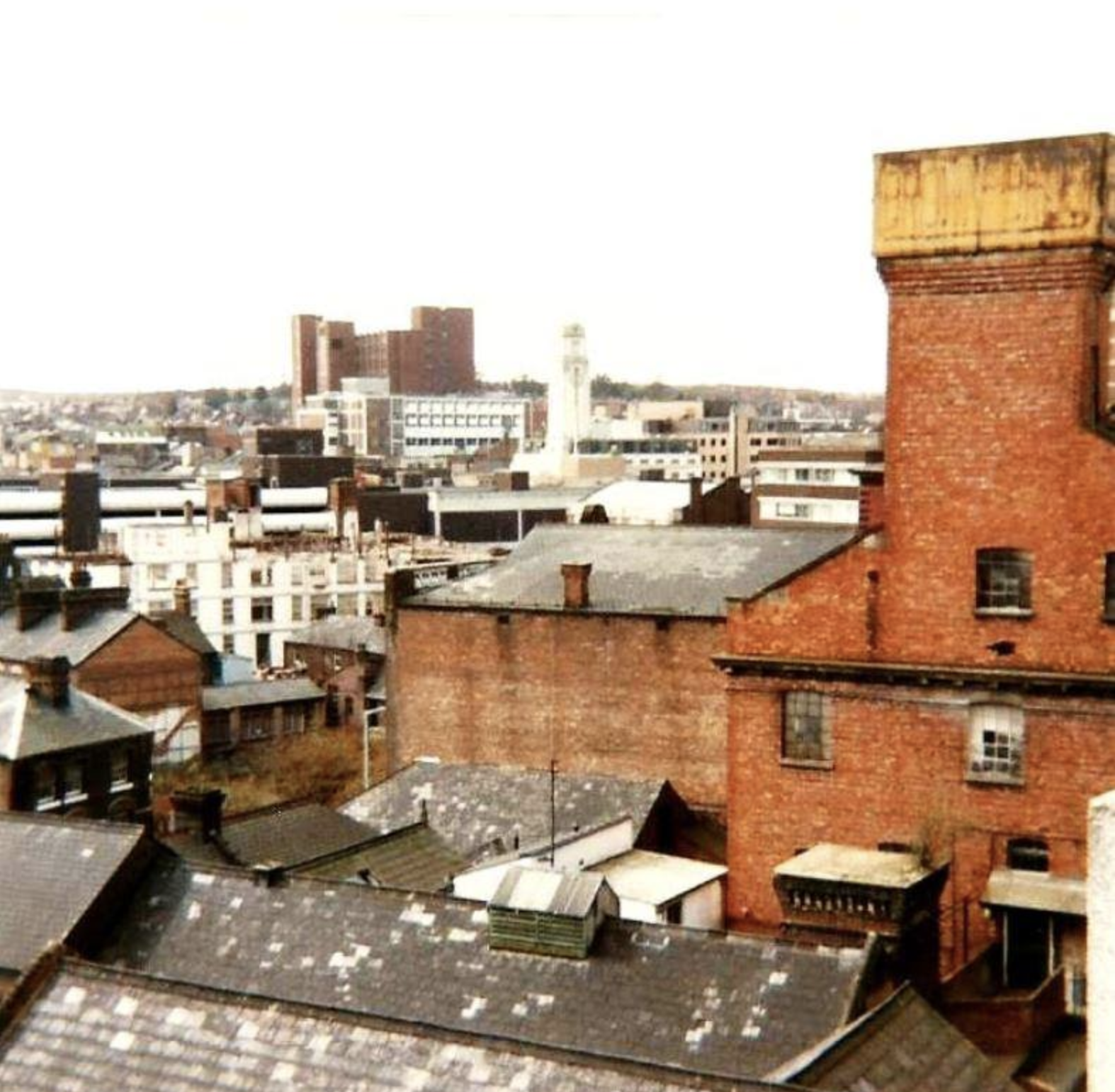We're really proud of our 110-year old building in Luton town centre. It's a privilege to make our home in one of Luton's key historical assets and when the Heritage Lottery Fund offered us funding to research the history of Bute Mills with a group of young people, we jumped at the chance. This is what they discovered...
A Steam Powered Flour Mill
In 1860 the first railway line came through Luton. Part of the Great Northern Line established in 1858, the Bute Street Station was a branch of the Hatfield-London line connecting Dunstable to Welwyn Garden City. The Midland Railway followed in 1862 with full passenger service to London in operation by 13th July 1868. This meant there were excellent transport links in place for both finished goods and raw materials, enabling buyers and wholesalers to visit the town regularly and easily. Railway goods yards developed on the south side of the station and development along the Bute Street and Guilford Street axes reflected the desirability of a location within easy reach of the trains.
Taking advantage of the excellent transport links, the Browns, a local milling family bought the land and started to develop a mill next to the railway station so flour could be exported easily. The building was completed in 1911 on Bute Street, constructed to a high standard and in its early life referred to as the ‘Great Northern Steam Mill’.
Unlike the windmills and watermills which were common at the time, the Brown family’s business boasted innovative technology using a steam-powered mechanism to drive the mill. A huge tank on the roof of the building brought water down to the boilers which made steam and powered huge steel rollers. This milling method was faster and more efficient and subsequently the Brown business continued to flourish. Today, the iron water tank built on a corbelled brick support remains a landmark feature, emblazoned with ‘Brown Bros' as a testament to their economic and industrial local legacy.
The Brown Family
Daniel Brown, originally from the nearby village of Podington, owned a significant area of the land now located in Luton town centre. The Browns were an extremely innovative family, owning flour mills and saw mills in Luton as well as on the banks of the Thames in East London. They were also an incredibly generous philanthropic family, investing in education for local children as well as giving away flour or bread to families in need. Daniel Brown also built Surrey Street Primary School. At the time, people asked why he would build a school in a field at the edge of Luton but time has proved his entrepreneurial foresight right with the school now sitting at the heart of a busy residential area of town.

A Hat Factory
Records from the National Archive show that between 1928-1929, Bute Mills – while still owned by the Brown Family – was converted into a hat factory and warehouse. This part conversion was inevitably prompted by the decline of corn milling and is a testament to the adaptability and entrepreneurialism of the Brown Family. It is worth noting however that Luton’s straw hat trade peaked way before this time – with the height of manufacture and trade around the mid 1800’s, a boom catalysed by the improved railway links and a national demand for plait and straw hats. A further reason for the success and rapid expansion of the industry was the relatively low set-up costs for new businesses and the high returns that might reasonably be expected.
In 1894 it was estimated that English plait cost twice as much as Italian and six times as much as the Chinese. In 1891 Japanese plait had started to arrive in considerable quantities, also at a much cheaper price than English. It was impossible for the English plaiting industry to survive in the face of such competition and prices plummeted. Some plaiters continued to work up until the 1920s and 1930s, fulfilling the very small demand for English plait, mostly for boater making. But the younger generations were not learning the skills and by 1939 the craft had almost totally disappeared after dominating life in the south east midlands for nearly 200 years. A decline which inevitably forced the Brown Family to sell the Mill.
A Fertiliser Manufacturer
In the summer of 1939 a fertiliser manufacturing company founded by a Mr Richard Haigh moved in to Bute Mills. The company was initially called Produx Industries and produced speciality compost mixes for domestic use. Their main product was an ammonium phosphate based devised in Switzerland, called Garotta. It was the popularity of this product which led to the company’s rebrand in the 1960s to Garotta Products.
Today in the bathroom on the ground floor of the building you can see examples of some of Garotta’s incoming mail. Look closely and you'll see that different addresses are used across these enquiries. Bute Mills building spans 72-80 Bute Street and the company deliberately advertised using different addresses in each published advert. The number on the envelope would let the company know which adverts were receiving greater attention and working most effectively.
In 1973 Richard Haigh’s son (also called Richard) took over the business from his retiring father. He ran the company until he retired, selling the company along with the Garotta trade mark.
By the 1980s the industrial economy had fallen further into decline and Bute Mills was converted for commercial use. The original steam milling machinery was removed in the late 20th century. The building witnessed further internal remodelling including the introduction of staircases and partition walls.
Bute Mills was subsequently resold by Simpsons Estate Agents in 1988.
One of Garotta's former employees, Sheila Norman, told us about the internal layout of the building at that time, with a staircase in what is now our reception area and large funnels through the floor from level 1 into the ground floor. The white fertiliser powder was shovelled into the funnels for bagging up below. Workers would go home covered in the dust.
Sheila recalls working conditions in the building which at the time had no internal toilets. Employees wishing to use the facilities had to exit the building via a door on the first floor, making their way across the roof of the adjacent building and down an external staircase to some outdoor toilets in Mill Yard. The adjacent building has since been demolished.
An Advertising Agency
By 1993, the building was owned by Macdonald Humphrey. A small advertising agency moved in, with just enough staff to set an office in the roof space. Butterfield Morris Bushell, named after its three founders, Chris Morris, Jeff Bushell, and Robert Butterfield. They specialised in marketing and advertising design. They grew rapidly over the next few years, becoming one of the largest advertising agencies in the UK.
BMB offered digital campaigns, web and promotional services and some of the company’s clients over this period included Saab, Chevrolet, National Grid, Vauxhall, Docklands Light Railway and St Johns Ambulance. In 2009 changes in insurance for creditors in the automotive industry (where BMB did most of their business) alongside the global financial recession, forced the company to go into voluntary liquidation and close down.
Youthscape
Youthscape is a Luton-based organisation founded in 1993. The aim was to support young people in the town, especially those from disadvantaged backgrounds. By 2012, the charity was still based at their offices and drop-in centre next to the Town Hall on Upper George Street but space was tight.
In the autumn of that year, a plan was hatched to find a bigger and better home and Bute Mills was spotted. In light of the building’s price tag of more than £1 million, Youthscape started a campaign in January 2013 to raise the necessary funds. The local community rose to the challenge and funds began to pour in, with support from Bedfordshire and UK-wide grant-making Trusts. On New Year's Eve 2013, with just hours to go before the seller's final deadline for purchase runs out, the final funds were raised, the transaction was completed and Youthscape took on the next part of the Bute Mills story.
Designing for the future
The purchase of Bute Mills proved to just be the start of the adventure for Youthscape. The building needed extensive refurbishment and remodelling to make it suitable for its new role serving young people in the town. A further £2.4 million was raised in the following two years. Some of the contributions even came from people who had worked in the building in its previous eras.
Andy Warnerlacey and the team at HOK, one of the worlds' leading architects, took on the challenge of designing the new interior - aided by generous support from many companies who contributed materials and equipment. They worked with the team and local young people to conceive a new vision for the building. The challenge was to make it not only practical, but an inspiring place for teenagers to visit.
The incredible transformation of Youthscape’s new home was completed ahead of its opening in 2016 by the Duke and Duchess of Cambridge. On 24th August that year, the Duke and Duchess visited and met local young people as well as touring the building, even stopping for lunch on the way!
Today Youthscape continues our work in Luton with thousands of young people to find the support and help they need. – now with Bute Mills providing world-class facilities for them.















